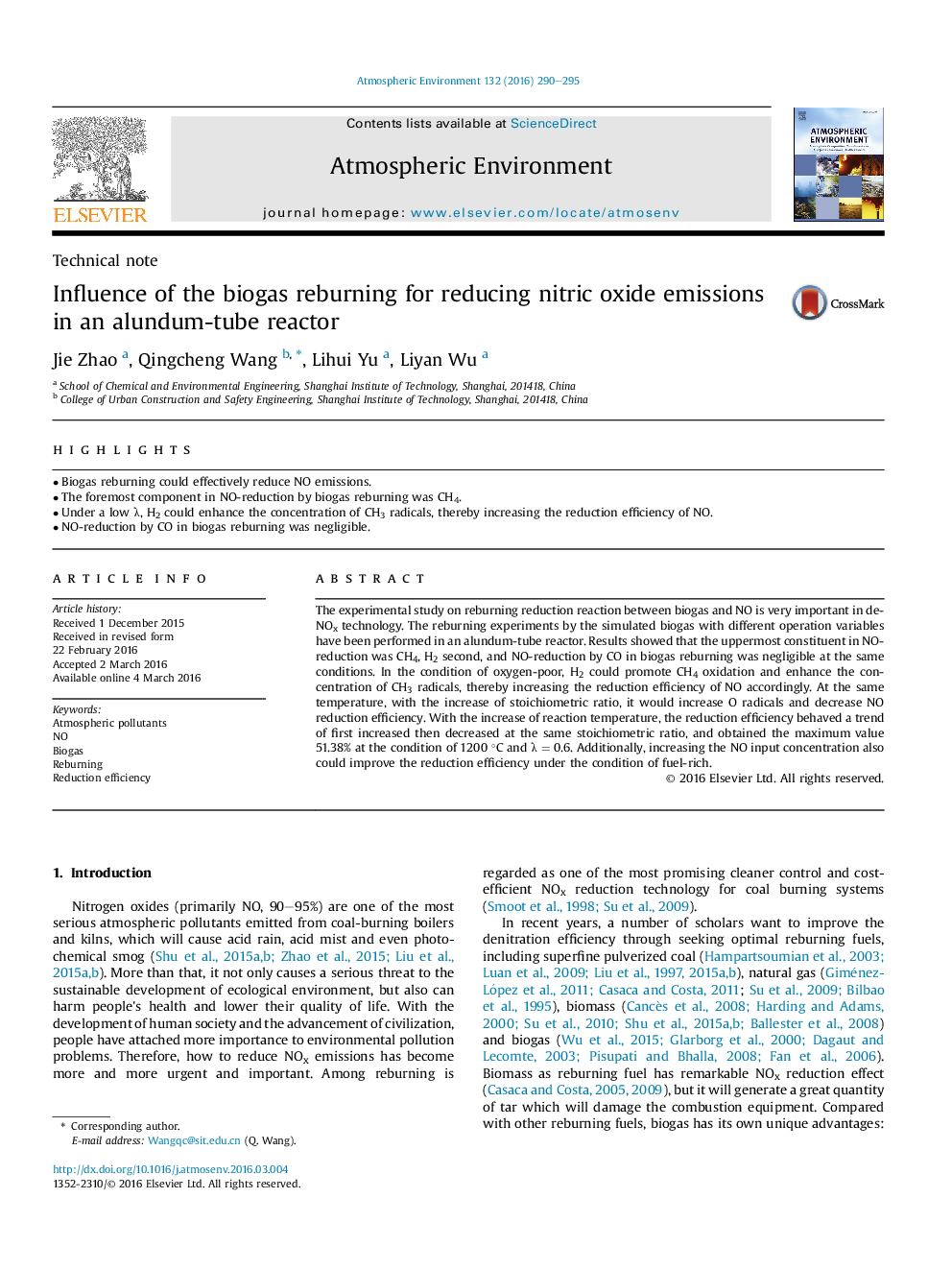| Article ID | Journal | Published Year | Pages | File Type |
|---|---|---|---|---|
| 6336418 | Atmospheric Environment | 2016 | 6 Pages |
Abstract
The experimental study on reburning reduction reaction between biogas and NO is very important in de-NOx technology. The reburning experiments by the simulated biogas with different operation variables have been performed in an alundum-tube reactor. Results showed that the uppermost constituent in NO-reduction was CH4, H2 second, and NO-reduction by CO in biogas reburning was negligible at the same conditions. In the condition of oxygen-poor, H2 could promote CH4 oxidation and enhance the concentration of CH3 radicals, thereby increasing the reduction efficiency of NO accordingly. At the same temperature, with the increase of stoichiometric ratio, it would increase O radicals and decrease NO reduction efficiency. With the increase of reaction temperature, the reduction efficiency behaved a trend of first increased then decreased at the same stoichiometric ratio, and obtained the maximum value 51.38% at the condition of 1200 °C and λ = 0.6. Additionally, increasing the NO input concentration also could improve the reduction efficiency under the condition of fuel-rich.
Related Topics
Physical Sciences and Engineering
Earth and Planetary Sciences
Atmospheric Science
Authors
Jie Zhao, Qingcheng Wang, Lihui Yu, Liyan Wu,
